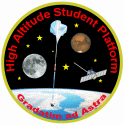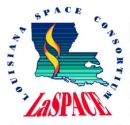



Payload 11 Information
Payload Flight Number:
Institution:
Payload Title:
Quantifying Stratospheric Infrasound with a Free Flying Acoustic Network
Student Leader:
Faculty Advisor:
Payload class:
Large
Payload ID Number:
11
Mass:
11.1 kg
Current:
1382 mA
Serial Downlink:
Yes
Analog Downlink:
Yes
Serial Commands:
?
Discrete Commands:
Yes
Payload Specification & Integration Plan
Due: 06/26/2015
Delivered:
Payload Integration Certification
Scheduled: 08/07/2015
Actual:
Flight Operation Plan
Due: 08/03/2015
Delivered:
Final Flight / Science Report
Due: 12/11/2015
Delivered:
Abstract:
The flight of the UNC payload on HASP 2014 demonstrated the successful operation of a free flying acoustic sensor array in the stratosphere. A wide variety of pressure fluctuations spanning five orders of magnitude in frequency were recorded. However, the provenance of these signals was difficult to ascertain, raising the possibility that some of them may have been due to vibrations on the HASP gondola or other non-acoustic sources. The joint UNC/NC State experiment proposed here will address this issue by using a suite of temperature, vibration, and wind sensors in addition to an expanded acoustic array. We will improve the design of our acoustic sensors to keep them in linear amplitude range throughout the duration of the ascent and float portions of the flight. In addition, we will develop instrumentation and measurement techniques for future independent (non-HASP) airborne acoustic arrays by lowering an independent data logger/microphone package beneath the gondola. We expect the array to verify detection of ocean wave infrasound observed in HASP 2014, determine whether episodes of broadband pressure fluctuations are due to wind noise or clear air turbulence in the troposphere, and evaluate the source of numerous narrowband signals observed during float.
Payload Integration Plan:
Science Report:
|